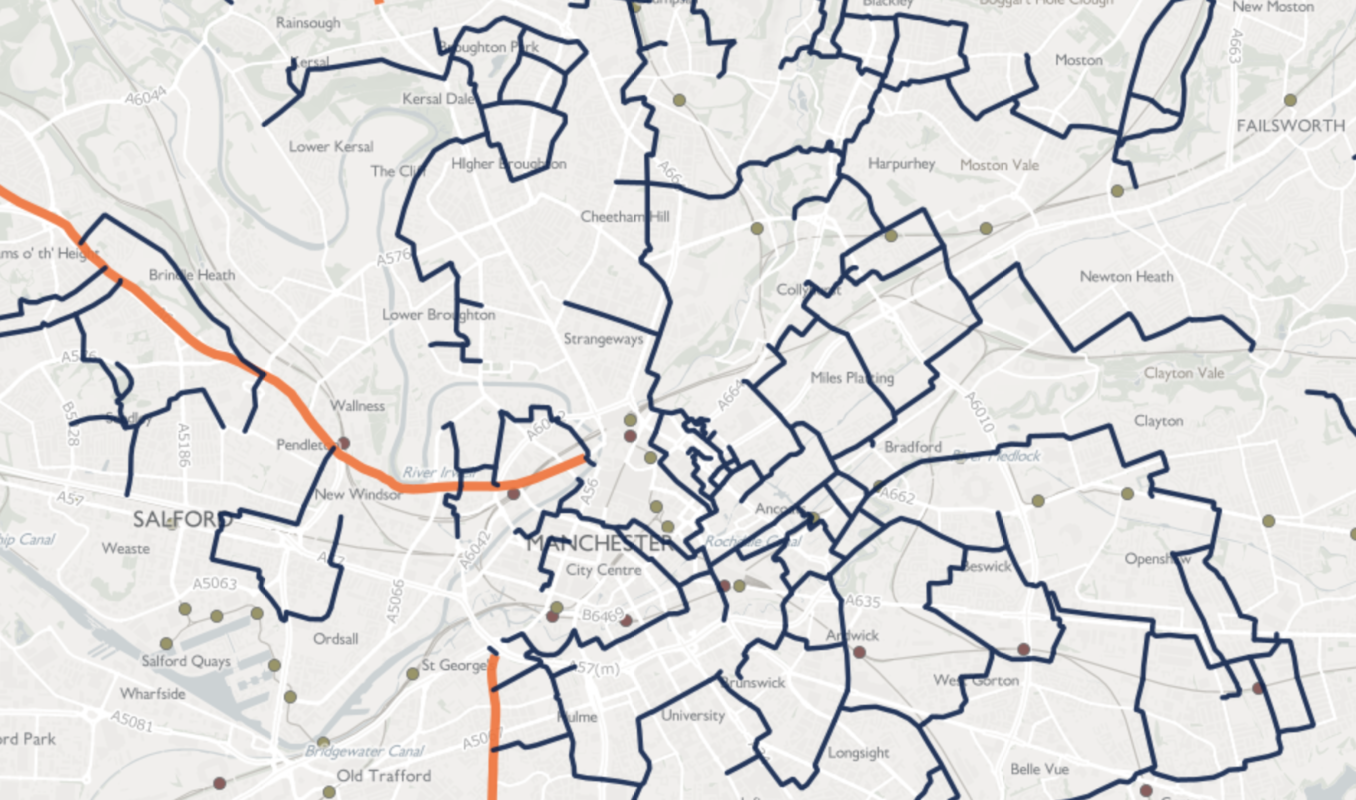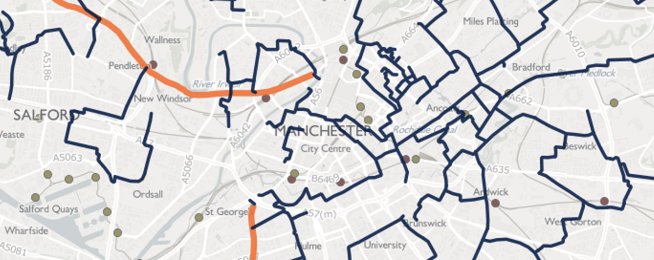Australian capital cities have been put to shame by Manchester’s plan to spend $890 million on bike infrastructure, and that’s just the start.
The UK city, which is much smaller than either Melbourne or Sydney, expects to spend $2.7 billion on a new cycling and walking network.
Manchester will have more than 1,600 kilometres of routes and 120 kilometres of segregated bike lanes, the UK’s largest active transport network.
Called Beelines, the plan also contains 1,400 safer road crossings, and 25 “filtered” neighbourhoods, where people will have priority over cars with the creation of traffic calmed streets for play, socialising and just hanging out.
The aim, picking up on the world-wide trend in city rejuvenation, is to reduce the negative impact of traffic.
People in Greater Manchester make 250 million car journeys of less than 1km each year, the equivalent of a five-minute bike ride or a 15 minute walk.
The City authorities have started with immediate funding of $286 million, combined with $450 million from the national government.
Mayor of Greater Manchester, Andy Burnham, said: “Greater Manchester has a long history of doing innovative things and our approach to Beelines is no different."
“This proposal is bold and I make no apology for that. If we’re to cut congestion and clean up our air, decisive action is needed. I want to make Greater Manchester one of the top 10 places in the world to live and it’s action of this sort which will help to deliver that promise."
“I’ve no doubt that Chris Boardman and the 10 local authorities which make up Greater Manchester will do us proud and make journeys on foot or by bike the first choice for local trips."
“This will help to tackle congestion and it will help to tackle poor air quality, as well as boosting people’s health and fitness levels."
Greater Manchester’s Cycling and Walking Commissioner, Chris Boardman, said: “I’ve been massively impressed by the political will of all of Greater Manchester’s 10 authorities to come together to make this plan a reality."
“It’s not really about people using bikes and walking – it’s about making better places to live and work by giving people a real choice about how they travel. In doing so, we’ll make the city region healthier and more prosperous."
“We’ve seen from other global cities that these methods work and the benefits are there for all to see – we simply can’t afford to be left behind."
“So now the hard work begins and we’ll be working closely with all local authorities and partners to deliver this plan as urgently as possible."
“Planners, engineers and, most importantly, local people in each council area led on creating the first draft of these plans, which will evolve in the months and years ahead. By involving local people from the very first stage, and enabling them to inform the details of each proposed route and crossing, we’ll get the outcome they need, not what we think they need.”
There are eight design principles for the project
- Streets should be places where people choose to spend time socialising rather than just save time passing through
- Street design should focus on moving people rather than traffic
- Dedicated separate space should be provided for walking and for cycle traffic
- People should feel safe, relaxed and secure on the street and not just in a car
- People should feel like they can stroll without delay and linger without issue
- Protection and priority should be given to people cycling and walking at junctions
- Health benefits should be highlighted and quantified for all street improvements
- Walking, cycling and public transport should go hand-in-hand



